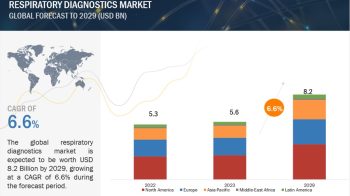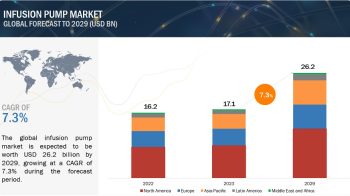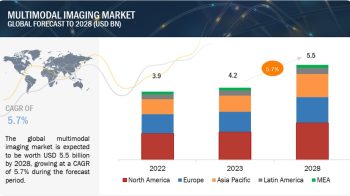Growth Boosting Factors:
Growth in the sleep apnea devices market can be attributed to factors such the large pool of undiagnosed sleep apnea patients, growing awareness about the ill effects of untreated sleep apnea, growing usage of oral appliances, technological advancements in sleep apnea devices, considerable venture capital funding, and the increasing number of companies venturing into sleep apnea and oral appliances markets.
Market Dynamics:
Driver: Large pool of undiagnosed sleep apnea patients
Although highly prevalent in the elderly, sleep apnea affects people of all ages and is one of the most common sleep disorders across the globe. The health impact of sleep apnea is quite substantial but under-recognized.
Download PDF Brochure@
https://www.marketsandmarkets.com/pdfdownloadNew.asp?id=719
Worldwide data suggests that sleep apnea impacts more than 936 million people worldwide, which is nearly 10 times greater than previous estimates (Source: ResMed). In the US alone, around 22 million Americans suffer from obstructive sleep apnea (OSA); of which, 80% of moderate and severe OSA cases are undiagnosed [Source: American Sleep Apnea Association (ASAA)]. In the UK, OSA affects an estimated 1.5 million adults; up to 85% of these cases are undiagnosed or untreated. In countries with huge population bases, such as India and China, the diagnosis rate of OSA is <1% (Source: Press Trust of India, 2017 and China.org.cn).
Restraint: High cost of CPAP machines
In most developed countries, the cost of a CPAP device is either reimbursed or provided by medical insurance companies. The main reason for non-adherence is non-acceptance on the part of the patient, mainly due to the mask causing discomfort or claustrophobia. However, conditions are different in most developing countries, where insurance access is minimal and insurance companies usually do not cover the cost of a CPAP device.
In countries like India, CPAP is not covered by private insurance companies. Only some government employees are able to be reimbursed for CPAP therapy, and that too reimbursement ranges from 30% to 100% depending on the reimbursement rules of various government offices. CPAP is generally an out-of-pocket expense for most of the Indian population. This is a major limiting factor for therapy adoption in these countries.
Market Size Estimation:
Both top-down and bottom-up approaches were used to estimate and validate the total size of the sleep apnea devices market. These methods were also used extensively to estimate the size of various subsegments in the market. The research methodology used to estimate the market size includes the following:
The key players in the industry and markets have been identified through extensive secondary research
The industry’s supply chain and market size, in terms of value, have been determined through primary and secondary research processes
All percentage shares, splits, and breakdowns have been determined using secondary sources and verified through primary sources.
Opportunity: Increasing focus on telemedicine and mHealth (mobile health)
Several studies have reported that a main predictive factor for long-term CPAP compliance is patient adherence in the first few weeks of treatment. To improve compliance, support and follow-up during this period must be prompt. Telemedicine offers this kind of assistance since long waiting lists make it difficult to provide such support. Several studies suggest that patients in the telemedicine group expressed high satisfaction with their care. They especially liked the convenience of a live video visit with a sleep doctor.
Obstructive sleep apnea is a highly prevalent chronic condition, and telemedicine could play a vital role in the different phases of its management. In the future, using new devices capable of signal acquisition and analysis is expected to refine obstructive sleep apnea diagnosis; even smartphones’ built-in sensors could offer improved comfort and the possibility of home sleep monitoring. Continuous positive airway pressure titration could be performed with wireless devices, whose parameters can be changed remotely from sleep centers. Finally, the follow-up phase could be specially improved by using remote continuous positive airway-pressure data, self-management platforms, and mobile applications for patient feedback.
Request Sample Pages@
https://www.marketsandmarkets.com/requestsampleNew.asp?id=719
Expected Revenue Gains:
The market for sleep apnea devices is expected to grow from USD 4.5 billion in 2019 to USD 7.5 billion by 2024, at a Compound Annual Growth Rate (CAGR) of 10.7% during the forecast period.


